Table of content
Introduction
Cucumbers are a versatile vegetable that can be enjoyed in numerous ways, from fresh salads to pickles and even as a refreshing snack on its own. However, their high water content and delicate nature make them susceptible to spoilage if not stored properly. Proper preservation techniques can extend the shelf life of cucumbers, ensuring you can enjoy their crisp texture and fresh flavor for longer. This comprehensive guide will walk you through various methods of preserving cucumbers, from simple storage solutions to more complex preservation techniques like pickling and freezing.
Understanding Cucumber Storage Basics
Before diving into specific preservation methods, it’s crucial to understand the basics of cucumber storage. Cucumbers are 95% water, which makes them highly perishable. They also contain enzymes that can cause them to soften and spoil quickly if not handled properly. Here are some general guidelines for storing fresh cucumbers:
-
Harvesting Timing: For best results, harvest cucumbers when they are fully grown but still firm and crisp. Overripe cucumbers will have a softer texture and may not store well.
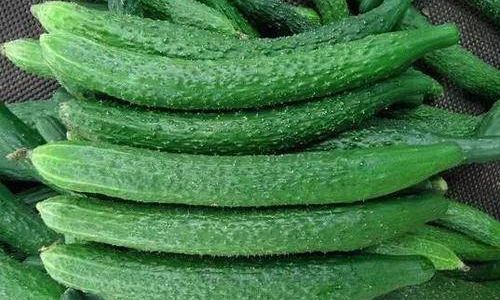
-
Handling with Care: Handle cucumbers gently to avoid bruising, which can lead to rapid spoilage. Use a soft cloth or paper towels to clean them, rather than abrasive materials that could scratch the surface.
-
Temperature Control: Cucumbers should be stored at a temperature between 50°F and 55°F (10°C and 13°C). This is cooler than room temperature but warmer than typical refrigerator settings. Storing cucumbers in the refrigerator can cause them to develop chill injury, characterized by pitting and water-soaked spots.
-
Humidity: High humidity is essential to prevent cucumbers from drying out. Store them in a well-ventilated container lined with damp paper towels or a cloth to maintain moisture levels.
-
Avoid Ethylene Gas: Ethylene gas, produced by some fruits and vegetables, can accelerate the ripening and spoilage of cucumbers. Keep cucumbers away from ethylene-producing fruits like apples, bananas, and tomatoes.
Simple Storage Solutions
For short-term preservation, there are several straightforward methods you can use to keep cucumbers fresh for a few days to a week.
Refrigerator Storage (with Modifications)
While cucumbers don’t thrive in standard refrigerator temperatures, you can modify your storage approach to accommodate them:
- Crisper Drawer: Use the crisper drawer, which typically has a higher humidity setting, to store cucumbers. Line the drawer with a damp paper towel or cloth to maintain moisture.
- Perforated Bag: Place cucumbers in a perforated plastic bag to allow for some air circulation while keeping humidity high. Avoid sealing the bag tightly, as this can trap ethylene gas and promote spoilage.
Countertop Storage
For immediate consumption, you can store cucumbers on the countertop in a cool, shaded area:
- Basket or Bowl: Place cucumbers in a basket or bowl lined with a damp cloth. Change the cloth daily to keep it fresh and prevent mold growth.
- Ventilation: Ensure there is adequate ventilation around the cucumbers to prevent moisture build-up and the development of mold.
Long-Term Preservation Techniques
For longer-term storage, you’ll need to employ more advanced preservation techniques. These include pickling, fermenting, drying, and freezing.
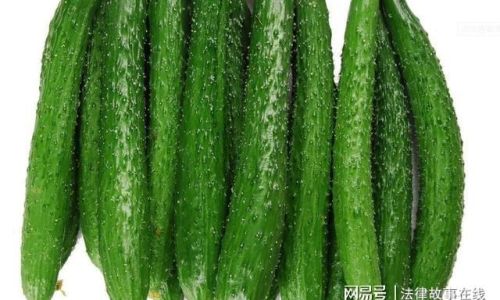
Pickling Cucumbers
Pickling is a traditional method of preserving cucumbers in a vinegar-based brine. This process not only extends their shelf life but also enhances their flavor.
Ingredients and Equipment
- Fresh cucumbers
- Vinegar (distilled white or cider vinegar)
- Water
- Salt
- Sugar (optional)
- Spices and herbs (such as dill, garlic, and red pepper flakes)
- Clean jars with tight-fitting lids
- Water-bath canner or large pot
- Tongs or jar lifter
- Clean cloth or paper towels
Steps
-
Prepare Cucumbers: Wash cucumbers thoroughly and remove any blossoms or stems. Cut them into desired sizes, typically spears or chips.
-
Prepare Brine: In a large pot, combine vinegar, water, salt, and sugar (if using) according to your recipe. Heat until the salt and sugar are fully dissolved.
-
Pack Jars: Pack cucumbers into clean jars, leaving headspace as specified in your canning recipe. Add spices and herbs to each jar.
-
Pour Brine: Pour hot brine over the cucumbers, ensuring they are fully submerged. Remove any bubbles with a clean, non-metallic utensil.
-
Seal Jars: Wipe the jar rims clean and secure the lids tightly.
-
Process Jars: Place jars in a water-bath canner or large pot filled with enough water to cover the jars by at least 1 inch. Bring to a boil and process for the time specified in your recipe (typically 10-15 minutes for quarts).
-
Cool and Store: Remove jars from the canner and let them cool completely. Check for seals by pressing the center of each lid; it should not flex up and down. Store sealed jars in a cool, dark place.
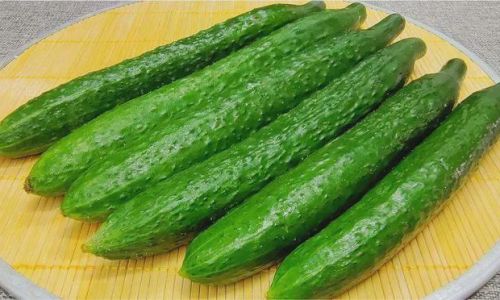
Fermenting Cucumbers
Fermenting cucumbers, often called pickles or gherkins, involves using lactic acid bacteria to preserve them. This process creates a tangy, probiotic-rich food.
Ingredients and Equipment
- Fresh cucumbers
- Salt (non-iodized, pickling, or kosher)
- Water
- Spices and herbs (dill, garlic, etc.)
- Fermentation weights or a smaller jar to keep cucumbers submerged
- Clean, airtight container (glass or ceramic)
- Clean cloth or lid with an airlock
Steps
-
Prepare Cucumbers: Wash cucumbers and remove blossoms and stems. Cut them into spears or chips, if desired.
-
Brine Preparation: Dissolve salt in water according to a 2-3% salt concentration (e.g., 2 tablespoons of salt per quart of water).
-
Pack Container: Pack cucumbers into the fermentation container, adding spices and herbs as desired. Pour brine over the cucumbers, ensuring they are fully submerged.
-
Submerge Cucumbers: Use fermentation weights or a smaller jar filled with water to keep the cucumbers submerged.
-
Cover and Ferment: Cover the container with a clean cloth or lid with an airlock to allow gas exchange. Place in a cool, dark place.
-
Monitor Fermentation: Check the cucumbers daily, skimming off any scum that forms on the surface. Taste periodically until they reach your desired level of tanginess.
-
Store: Once fermented to your liking, transfer cucumbers to clean jars and store them in the refrigerator to slow further fermentation.
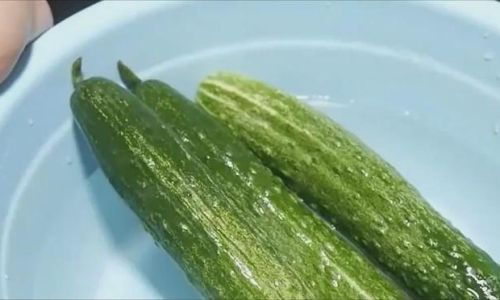
Drying Cucumbers
Drying cucumbers, also known as making cucumber chips, is a great way to preserve them for long-term storage.
Ingredients and Equipment
- Fresh cucumbers
- Salt
- Food dehydrator or oven with a convection setting
- Sharp knife or mandoline
- Clean cutting boards and knives
- Airtight storage containers or vacuum-seal bags
Steps
-
Prepare Cucumbers: Wash cucumbers thoroughly and slice them thinly using a sharp knife or mandoline. You can remove seeds for a less watery final product.
-
Salt Cucumbers: Sprinkle slices lightly with salt and let them sit for 30 minutes to an hour. This will draw out excess moisture.
-
Pat Dry: Pat the cucumber slices dry with paper towels or a clean cloth to remove as much moisture as possible.
-
Dehydrate: Arrange slices on dehydrator trays or oven racks, ensuring they are not overlapping. Dehydrate at a temperature of around 115°F (46°C) in a food dehydrator or the lowest oven setting with a convection fan, until they are crisp and dry (this can take several hours to a day, depending on thickness and humidity).
-
Store: Once fully dried, store cucumber chips in airtight containers or vacuum-seal bags in a cool, dark place.
Freezing Cucumbers
Freezing cucumbers is a straightforward method for preserving them, although the texture may change upon thawing.
Ingredients and Equipment
- Fresh cucumbers
- Lemon juice or vinegar (optional, to prevent discoloration)
- Blender or food processor
- Freezer bags or containers
- Ice cube trays (optional)
Steps
-
Prepare Cucumbers: Wash cucumbers and peel them if desired. Remove seeds for a smoother texture.
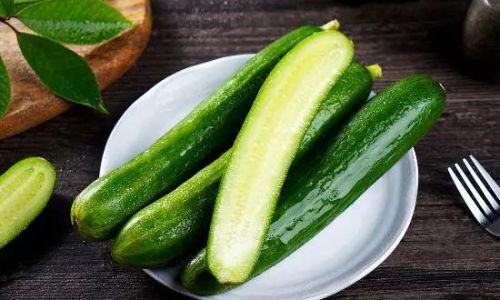
-
Puree Cucumbers: Blend or process cucumbers until smooth. You can add a small amount of lemon juice or vinegar to prevent discoloration.
-
Portion and Freeze: Pour cucumber puree into freezer bags or containers, leaving some headspace for expansion. Alternatively, use ice cube trays to freeze cucumber puree in individual portions.
-
Label and Store: Label the bags or containers with the date and contents. Store in the freezer for





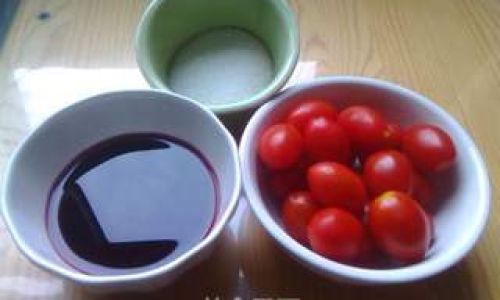
0 comments